How Remedy and Nvidia teamed up to push PC gaming to its limits with Control
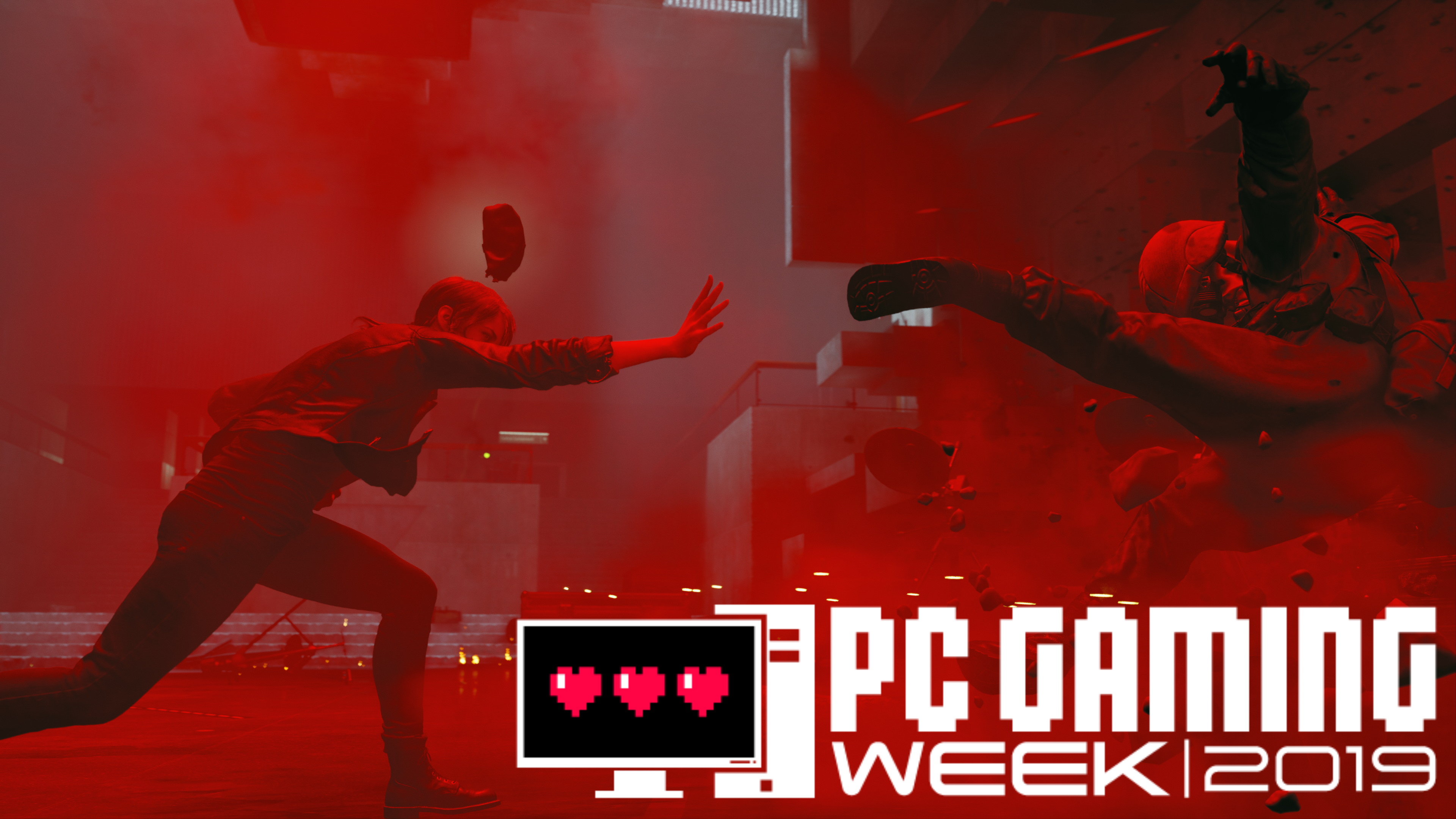
Control, the new game from Remedy (the team behind Max Payne and Alan Wake), could very well be the new benchmark when it comes to visually impressive PC games.
By teaming up with Nvidia, Remedy have managed to bring some of the most impressive cutting-edge visual effects to Control. With PC games in particular looking better than ever, it can be hard to truly stand out these days – but Control certainly manages it.
For TechRadar’s PC Gaming Week 2019, we chat to team members from both Remedy and Nvidia about how the two companies worked together to push PC gaming to its limits with Control.
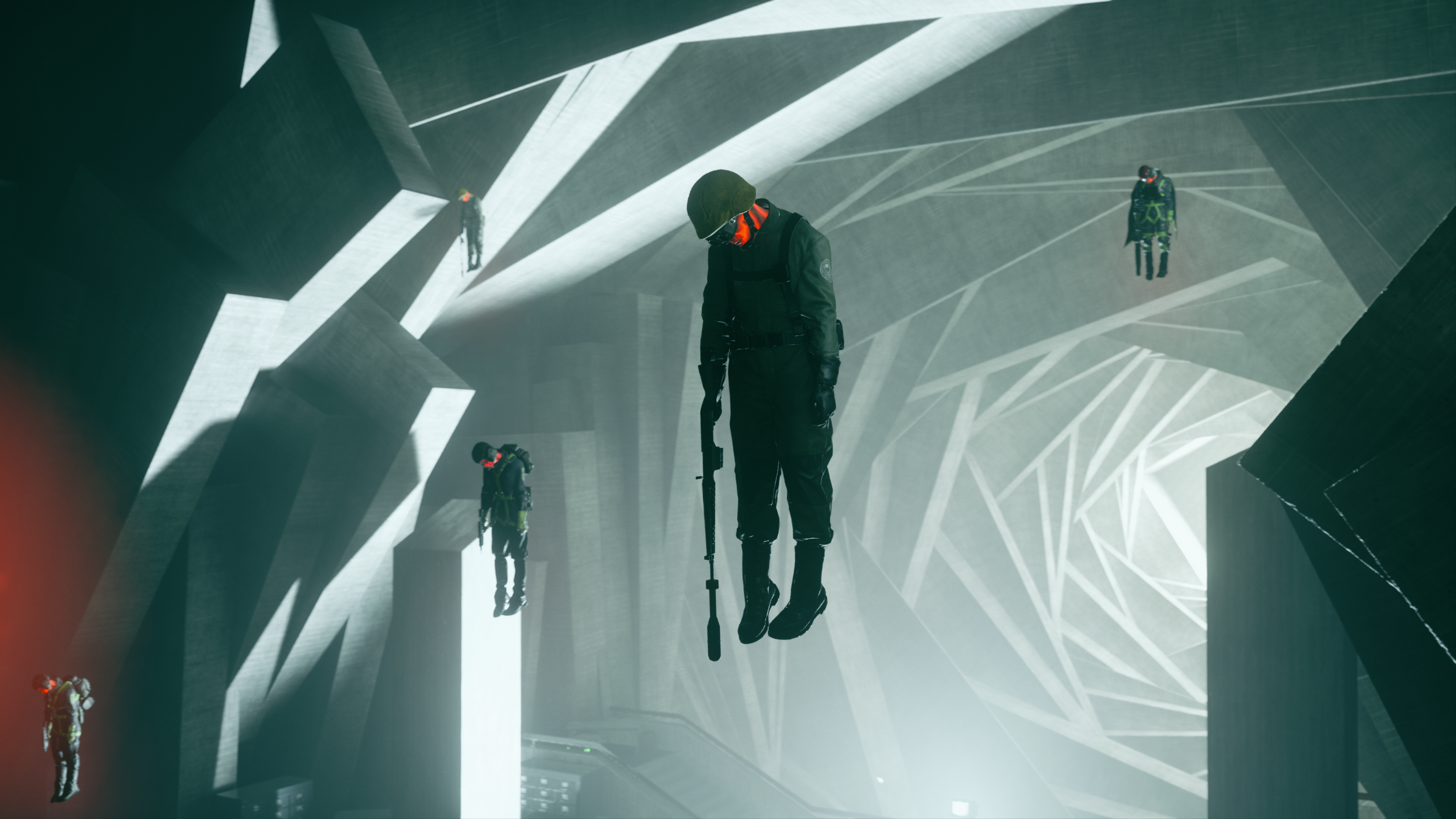
Ray tracing wins
One of the most exciting recent advancements in PC gaming graphics is ray tracing. This is tech – primarily pushed by Nvidia with its RTX lineup of GPUs – that allows PCs to render amazingly life-like light and shadows in a scene.
However, while ray tracing is certainly impressive – and has a lot of potential – it does have some issues as well. First of all, not many cards support it, and it it’s often very demanding, which means frame rates can take a dive unless you shell out for very powerful (and expensive) kit.
Another issue is that there are various types of ray tracing and ways of implementing it, and that can be confusing. So, the first thing we wanted to know, is what kind of ray tracing does Control make use of?
“Control utilises ray tracing through hybrid rendering, combining rasterization and ray tracing, offering multiple ray-traced effects; reflections, transparent reflections, indirect diffuse lighting and contact shadows,” explains Juha Sjöholm, Senior Devtech Engineer at Nvidia.
Sign up for breaking news, reviews, opinion, top tech deals, and more.
So, how does this tech work? “Ray traced reflections simulate the way light reflects on glossy and metal surfaces, and transparent reflections enables the same effect on windows and other see-through surfaces.
"Traditionally, reflections have been rendered using only information that is on the screen and in pre-baked cubemaps. Cubemaps can capture parts of the scene that are outside of the screen, but not dynamic objects such as moving characters. Blending between screen space reflections and cube maps may often lead to fairly inaccurate and incorrect result.“
“With ray tracing, we can easily render accurate reflections including dynamic objects and out-of-screen information"
Juha Sjöholm, Senior Devtech Engineer at
So, how does this tech work? “Ray traced reflections simulate the way light reflects on glossy and metal surfaces, and transparent reflections enables the same effect on windows and other see-through surfaces."
"Traditionally, reflections have been rendered using only information that is on the screen and in pre-baked cubemaps. Cubemaps can capture parts of the scene that are outside of the screen, but not dynamic objects such as moving characters. Blending between screen space reflections and cube maps may often lead to fairly inaccurate and incorrect result.“
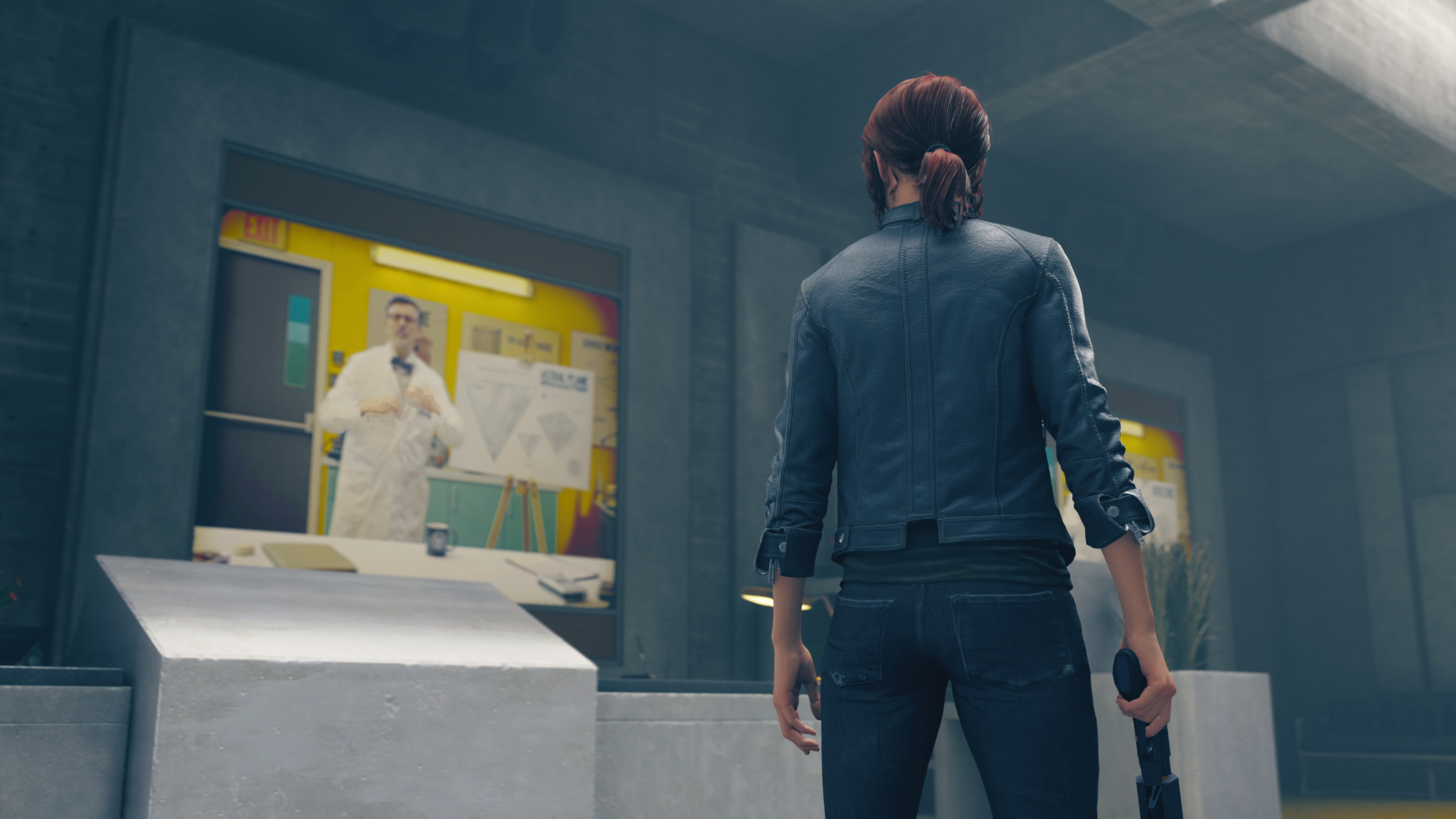
In the past, game developers have had to cut a few corners when it comes to lighting, shadows and reflections, and that can have an impact when it comes to realism. Next time you play a game, have a look at a shiny surface or a mirror if you can – you may notice that it doesn’t quite look right. According to Sjöholm, ray tracing can solve that.
“With ray tracing, we can easily render accurate reflections including dynamic objects and out-of-screen information. In practice - and in the best case - ray traced reflections can let players see what is happening behind them.”
It’s little details like that, and which are found in Control, which can make a big difference when it comes to believable and immersive graphics in PC games.
For example, Sjöholm explains how indirect diffuse lighting in games can be used to make graphics more believable. This is when your PC’s graphics card shows light bouncing between non-glossy surfaces. “When this indirect light is taken into account,” Sjöholm tells us, “you get a more realistic image on screen. For example, a brightly lit red carpet might reflect a subtle red glow on a nearby wall.”
You can see this effect as soon as your start Control, with the game kicking off in The Oldest House, a moodily-lit bureaucratic building in New York City. “Ray traced indirect diffuse lighting in Control is composed of two parts: for nearby surfaces, one bounce of real-time (dynamic) diffuse reflection is evaluated. If no nearby surfaces are found, we use the ray information instead to sample pre-baked global illumination at a more optimal location. The end result is that lighting feels more “natural” and objects “sit” better in the scene.”
Another way ray tracing is being used in Control for better graphics is with contract shadows. “Contact shadows are a hybrid technique where we trace shadow rays to add accurate shadowing on any surface that is close to the shadow caster,” says Sjöholm. “Shadow mapping techniques usually suffer from aliasing and ability to capture fine details such as contacts between objects, which can lead to different kinds of erroneous patterns and objects "floating" on a surface. Contract shadows fix these problems and improve realism.”

While ray tracing certainly makes a big difference to the graphical quality of PC games, can it be combined with 4K resolution? “Running ray tracing in 4K is possible, but it’s demanding to hardware,” admits Sjöholm. But does that mean it’s out of the question? “Depending on which ray tracing features are enabled and if DLSS is used, the game can offer a playable experience in 4K.”
So it is possible on existing hardware, but a few tweaks – and some would say compromises – need to be made to get the game running at 4K with ray tracing effects and a playable frame rate. It seems we’re still waiting for hardware that can handle all the graphical bells and whistles that comes with ray tracing at 4K resolutions. Perhaps this will be possible with the next generation of Nvidia graphics cards.
“Running ray tracing in 4K is possible, but it’s demanding to hardware.”
Juha Sjöholm
However, as Sjöholm mentioned, DLSS (Deep Learning Super Sampling) can be used to mitigate the performance impact of ray tracing thanks to using artificial intelligence. “DLSS can be used with ray tracing and we recommend using both together. In many scenarios the performance gains of DLSS will offset the impact of ray tracing, allowing you to play with higher frame rates, resolutions, and quality settings.”
What kind of kit do you need?
So, do you need an Nvidia GPU to experience ray tracing in Control. The answer is no… and yes.
“Well, technically, ray tracing in Control is not an Nvidia GPU-exclusive feature,” explains Sjöholm. “We achieved ray tracing with DirectX 12 DXR, so it’s based on an open standard. It just so happens that Nvidia GPUs are the only ones that support that open standard at the moment. When new GPUs come out that support DirectX12 DXR they should benefit from ray tracing, too.”
So, when AMD graphics cards come out that support ray tracing, owners of those cards will be able to benefit from Nvidia and Remedy’s work on Control.
However, as Sjöholm points out, there are certain features that you’ll only get with a card from team green. “Control also features Nvidia DLSS, which is only available on Nvidia GPUs.”
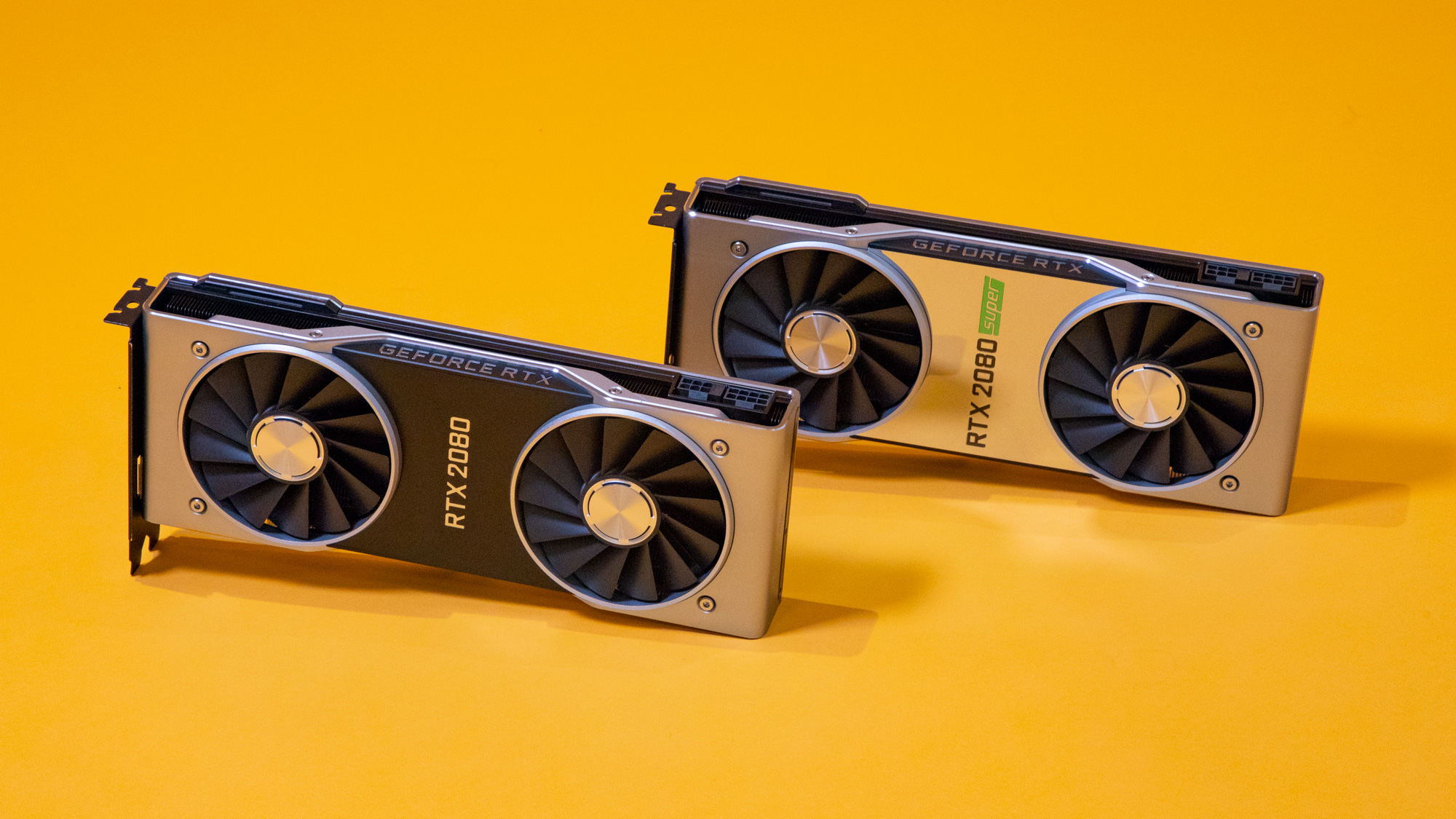
There’s no denying that the ray tracing puts a lot of pressure on your gaming rig – especially with graphical tour-de-forces such as Control. But not everyone can afford a killer gaming PC. What kind of performance can people expect on average PC hardware – such as an Intel Core i5 processor and Nvidia RTX 2060 GPU?
"Control offers a great experience without ray tracing, but ray tracing really enhances the visuals in a positive way,"
Juha Sjöholm
“With the RTX 2060, you’re able to turn on ray traced reflections on opaque and transparent surfaces, and run the game with very smooth frame rates,” promises Sjöholm. So you can run Control with ray tracing on with Nvidia’s mid-range graphics card. But you might need to do a bit of tweaking. “You’re also able to turn ray tracing effects on and off in any combination so you can tailor your experience, but you can turn all ray tracing effects on and still expect to have solid, smooth gameplay - DLSS will help provide the highest possible frame rates at maximum graphics settings.”
It sounds like DLSS is doing a lot of heavy lifting here. However, there’s also been lots of talk about the high system requirements to really get the most out of Control. Does Nvidia hope PC gamers will upgrade their rigs – especially if they don’t have an RTX card?
“Control offers a great experience without ray tracing, but ray tracing really enhances the visuals in a positive way,” says Sjöholm. “In fact, Control offers some breathtaking effects and is already being heralded as a showcase for ray-traced graphics. In the end, only the gamer can decide if it is time for a hardware upgrade, but it seems an upgrade to a GPU that supports DXR makes the most sense right now.”
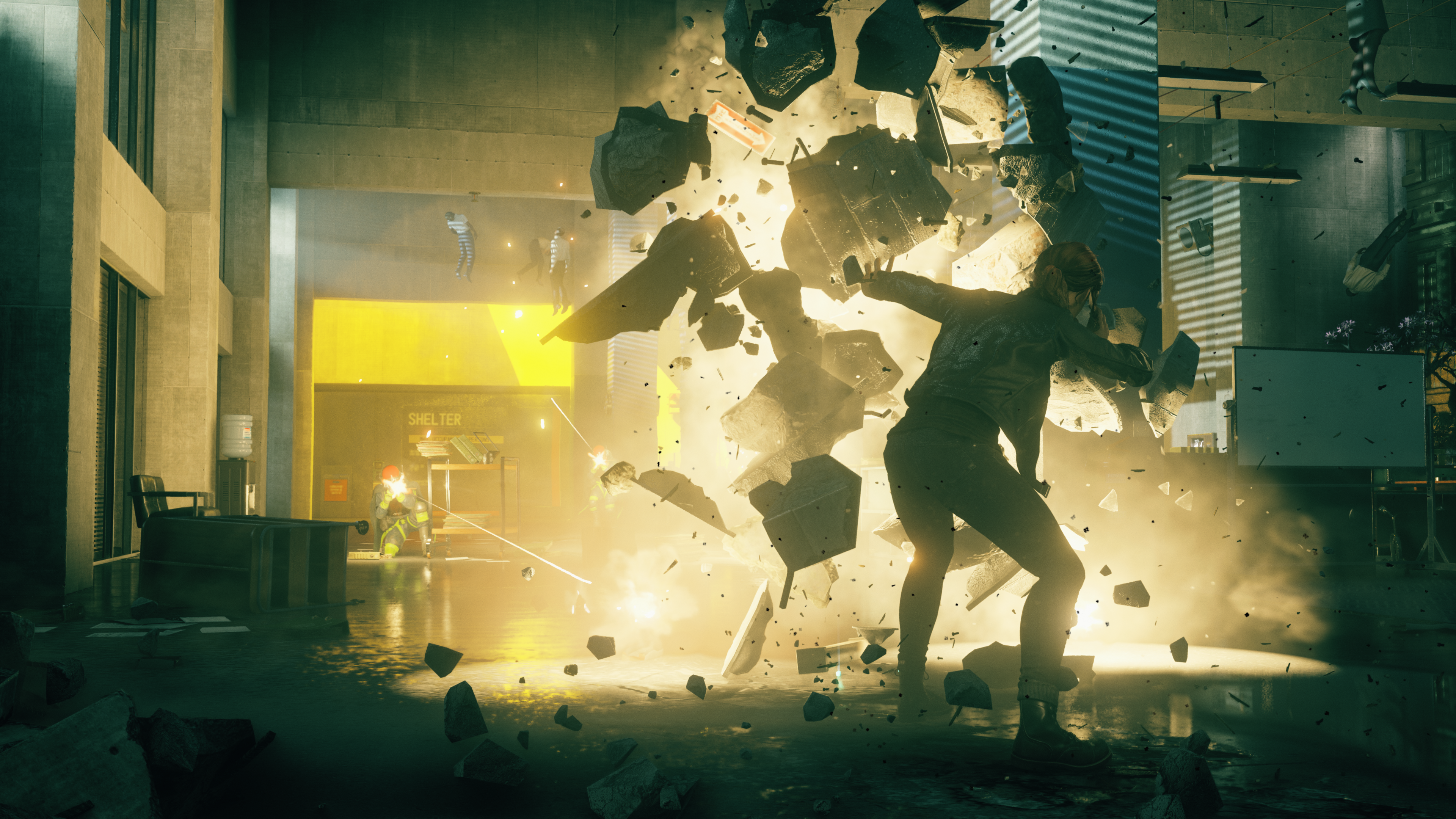
So, basically, yes. Nvidia is hoping games like Control encourage gamers to upgrade their GPUs. But doesn’t that mean there’s an added pressure to make sure it is the best game - and the best looking game - gamers will ever see? “We wanted to make Control look the best it possibly could for gamers, and running it on RTX hardware delivers the best possible game experience,” says Sjöholm.
Using modern tech to build a believable world
While all these new graphical effects are certainly interesting, how important are graphics when it comes to building an immersive and believable world?
“Immensely important,” confirms Stuart MacDonald, World Design Director, Remedy Entertainment. “Usually our games have quite challenging visual concepts to express, from the look of frozen time in Quantum Break to the liquid corruption of the Hiss in Control, or the vision of a setting.
"In Control, physicality was a big pillar for us, from telekinesis and destruction to the materials and Brutalist architecture. For example, that meant that being able to render architectural spaces which required good lighting solutions due to the very simple wall surfaces and details.”
The results speak for themselves. When you load up Control and first begin searching the office building, there’s something immensely familiar and believable about the setting, and the graphics no doubt help with that. Ray tracing, in particular, does a wonderful job of making the world feel believable.
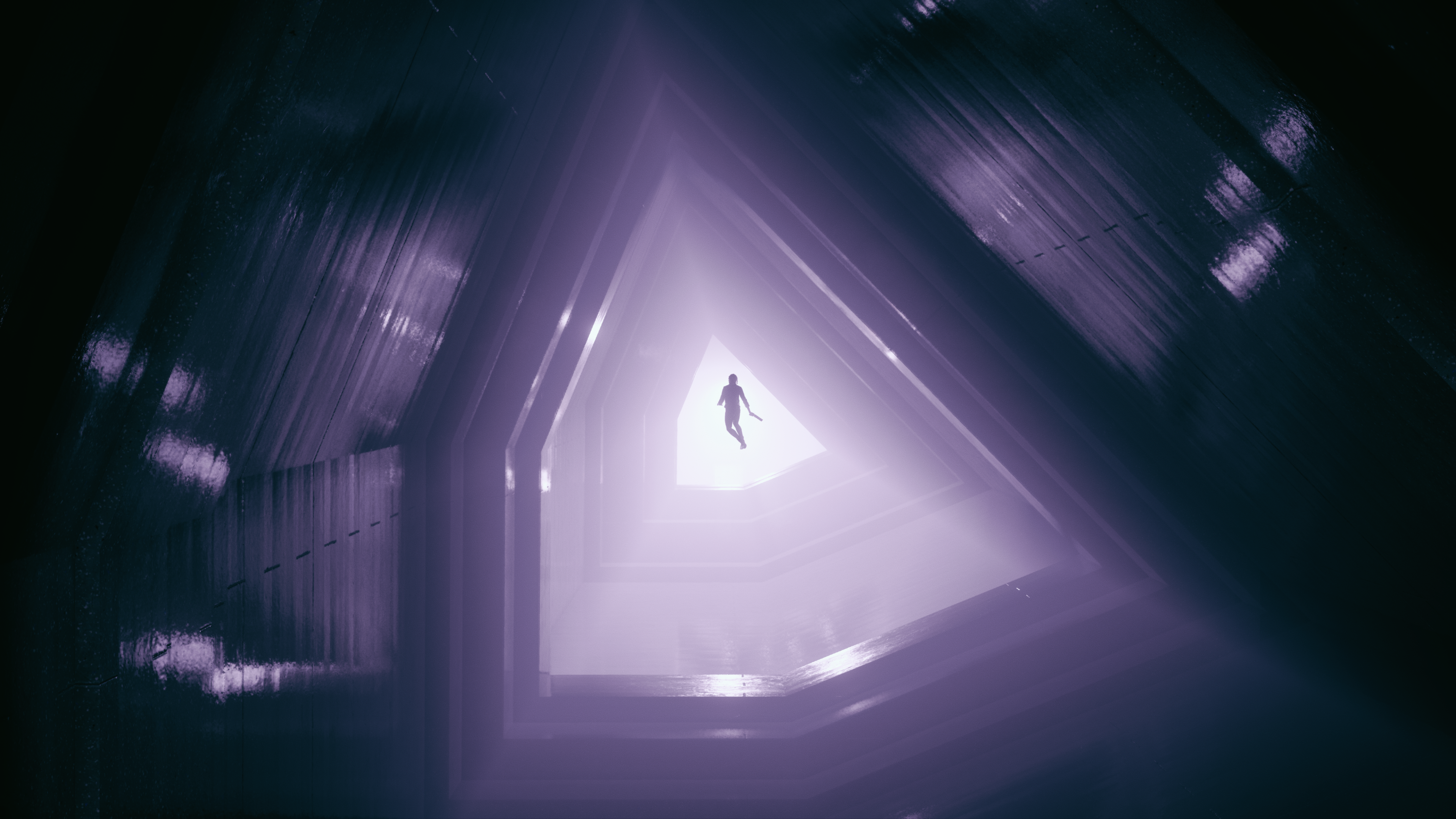
“With ray tracing, it is possible to render the game world more realistically and correctly,” explains Sjöholm. “It is possible to show details that were previously too difficult to capture. Ray tracing brings the quality of reflections, shadows and indirect lighting to the next level in Control.”
It’s not just big action set pieces that benefit from the tech, but smaller details as well. And it’s those details which arguably help make a game world look and feel more realistic.
“Interactions between different objects and surfaces are more detailed with ray traced contact shadows. With previous techniques, smaller objects might seem to "float" on surfaces. Contact shadows bring up the smallest details which makes you see interactions and contacts,” Sjöholm points out. “Notice how various office supplies cast fine shadows to a table where they lie or how Jesse's [the player’s character] walking becomes more realistic.”
"When we started to work on the game, we knew that we would like to make a physics heavy game."
Mikko Orrenmaa, Tech Team Manager, Remed
Allowing the player to interact with the world is another important facet when it comes to building a believable world. But how interactive is the world around in you Control?
“The world is very interactive in Control. When we started to work on the game, we knew that we would like to make a physics heavy game,” explains Mikko Orrenmaa, Tech Team Manager, Remedy Entertainment. “To make that possible, internally we developed new tools for breaking assets and a new workflow to enable content creators to create environments that could be destroyed.”
One of the first things you notice when playing the game, and first get into a fight, is how the environment around you gets destroyed. Bullets rip chunks of wood and concrete from the walls, while the glass in windows shatters realistically. It all makes for a thrilling – and immersive – experience.
This, as Orrenmaa explains, took a lot of work. “On the engine side, we rewrote our whole physics system to allow the Northlight engine to run all those reactive environments and destruction in the game. We also add particle collisions to make the destruction look better.”
It’s not just about how the world looks, either, but also how it sounds. “We had to make modifications to our audio and AI systems as well. Having a dynamic, reactive environment affects how sounds should work when you destroy things and move through the debris you created, and also the AI characters need to react and be able to navigate in this newly-destroyed environment properly.”
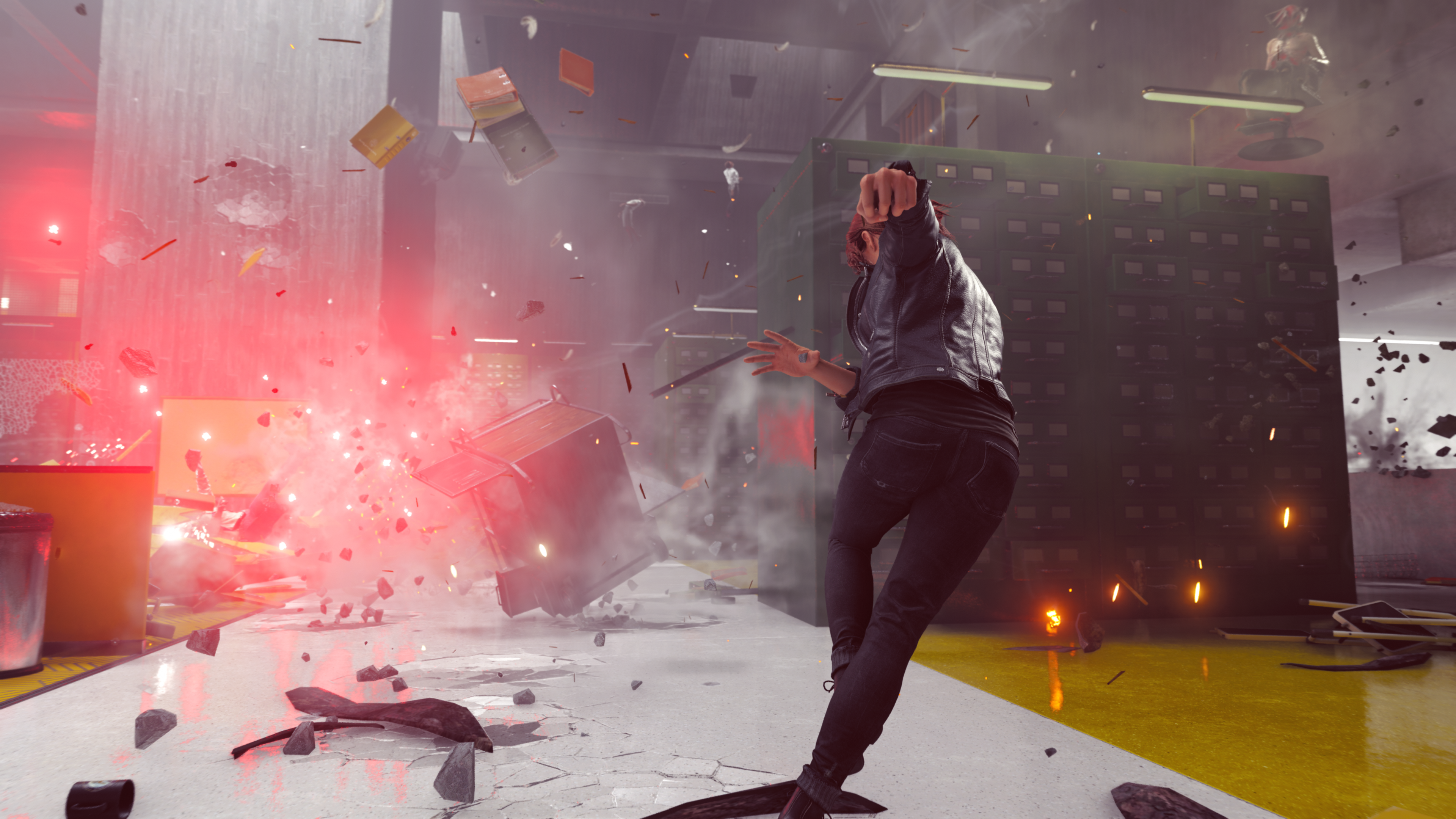
So, what kind of challenges did this level of detail and destruction produce?
“Having a lot of destruction in the game presents different challenges on how to break objects properly and make sure that the player can interact with objects in a meaningful way,” says Orrenmaa. “On the content creation side, this adds extra work to the team because all destructible content needs to be defined regarding when and how it breaks. A chair made out of metal legs and a feather-stuffed seat breaks differently from a wooden box, which breaks differently from a desk with drawers, and so on.”
That hard work and attention to detail certain paid off, with Control having one of the most realistic worlds we’ve seen in a recent PC game – despite it’s far-fetched story. Speaking of which…
Mastering the art of storytelling
Computer games also put a big emphasis on storytelling to draw players in and keep them playing. Remedy is particularly well known for making games with strong stories – as well as innovative ways of telling them. Did it try something new with Control?
“There's no shame in saying that all our previous games have been pretty linear,” admits Vida Starcevic, Community Manager, Remedy Entertainment.
“We knew the path that we wanted the player to take, and we took you down that path. Control is much more open-ended when it comes to level design: you can go where you like, if you're creative with your abilities and your surroundings. That meant we had to find a different way of telling Jesse's story and the story of the Federal Bureau of Control.”
“There's no shame in saying that all our previous games have been pretty linear.”
Vida Starcevic, Community Manager, Remed
Part of telling this story is by using the believe world that Remedy created. “We use a lot of environmental storytelling like in-world videos that the Bureau produces and files and audio messages you can find. There's also characters you can talk with in order to find out more about the world.”

So, exploration is definitely rewarded, according to Starcevic. But if you don’t want to pick up every item in the world – no matter how lovingly rendered – it doesn’t mean you’ll be confused by the story. “You won't miss an important part of the plot if you don't read a document tucked away in a room behind a locked door. The stuff crucial to the plot is all on the main mission path, but we've hidden a fair share of secrets throughout the game, and it pays off to find them.”
The story of Control – no spoilers here – is easily one of its best features. But what was the biggest influence on the team for Control?
“We're never inspired just by video games, or just by one medium,” explains Starcevic. “The main inspiration for Control comes from the Southern Reach trilogy by Jeff Vandermeer, and the movie adaptation of the first book, Annihilation (directed by Alex Garland). We've also been inspired by some of the motifs in House of Leaves by Mark Z. Danielewski. Of course, creators such as David Lynch and Stephen King inspired us as well.”
"It gets pretty weird. You fight a fridge and a mirror at one point.”
Vida Starcevic
Of course, the environments of Control are just as striking as the narrative. “When it comes to aesthetic, the Bureau's architecture is heavily influenced by the architectural style of brutalism.”
That’s a heady mix of influences, then. Just how weird does Control get? “It gets pretty weird. You fight a fridge and a mirror at one point.”
That’s quite an answer. But we’re seeing some brilliant PC games – both AAA and Indie – coming out these days, and that can make games – no matter how good – struggle to stand out. What sets Control apart from modern games?
“There's not a lot of games where you get to throw things with your mind in a secret facility dedicated to the study of supernatural phenomena,” Starcevic tells us.
“There's even fewer games where you have a gun that changes shape, an upside-down pyramid that talks to you, or where you're chased by an evil rubber duck. Control stands apart both by the weirdness of the narrative and the setting, and the combination of the telepathy-based mechanics with the shifting weapon.”
When it comes to pushing PC gaming to its limits, perhaps it's not all about the graphics...
- These are the best PC games of 2019
Welcome to TechRadar's PC Gaming Week 2019. We're celebrating the most powerful gaming platform on Earth with in-depth articles, exclusive interviews and essential buying guides that showcase everything PC gaming has to offer. Visit our PC Gaming Week 2019 page to see all our coverage in one place.

Matt is TechRadar's Managing Editor for Core Tech, looking after computing and mobile technology. Having written for a number of publications such as PC Plus, PC Format, T3 and Linux Format, there's no aspect of technology that Matt isn't passionate about, especially computing and PC gaming. He’s personally reviewed and used most of the laptops in our best laptops guide - and since joining TechRadar in 2014, he's reviewed over 250 laptops and computing accessories personally.